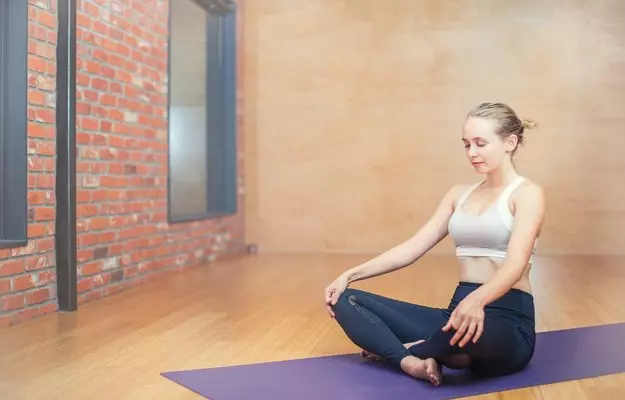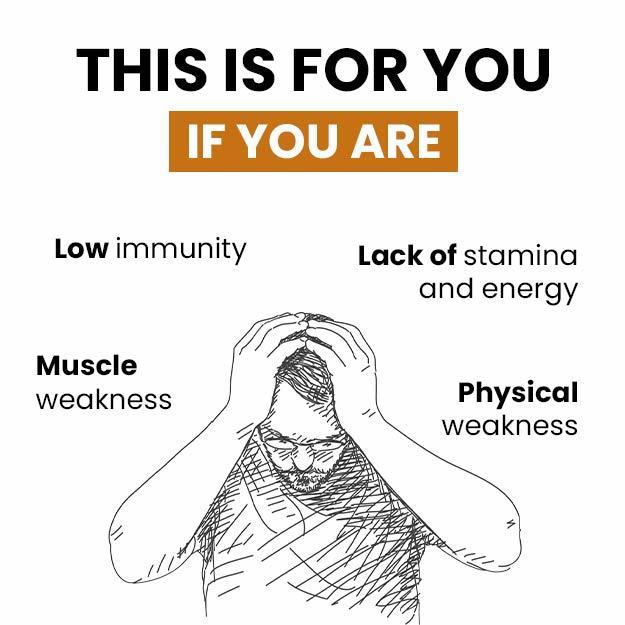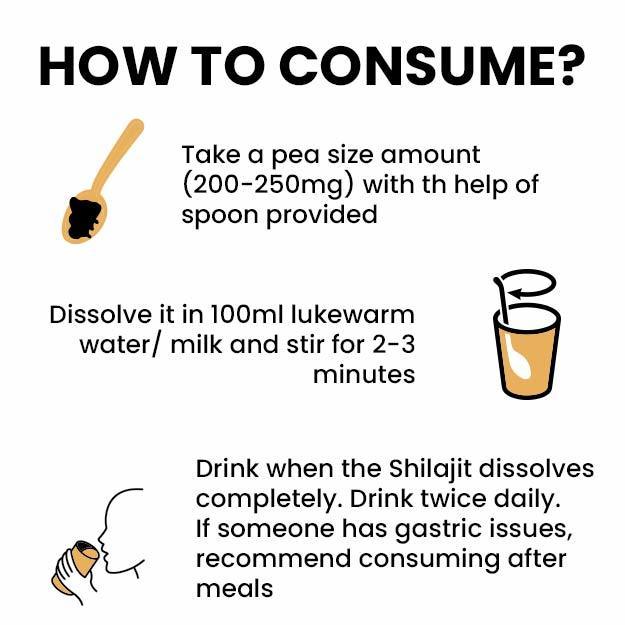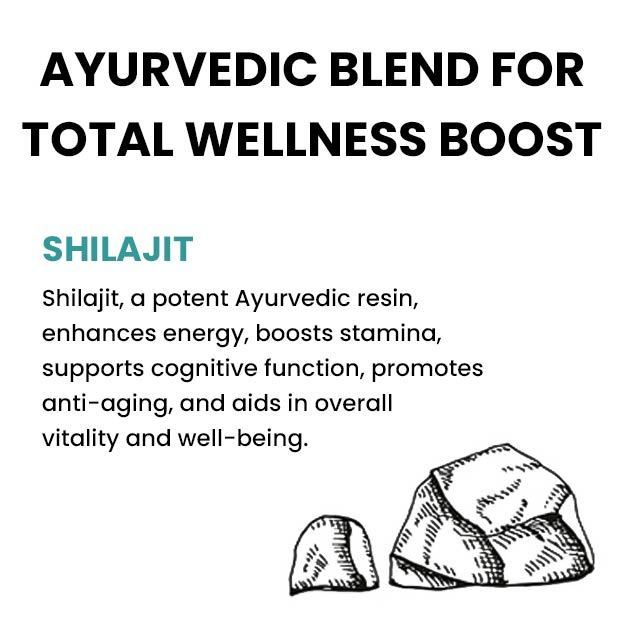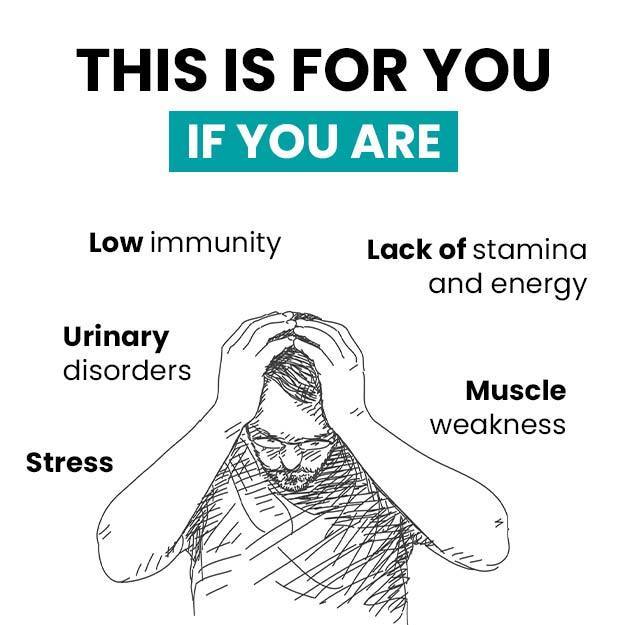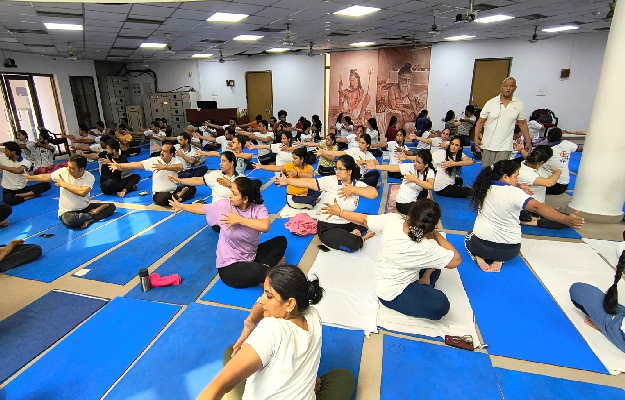Meditation, such a simple word poured in with millennia of history. Essentially a focus method, meditation has been enticing mystics and the common world alike. India, the birthplace of yoga, is well aware of the many benefits that this simple concentration method can provide. Sages and spiritualists all over the world have been using one or the other form of meditation to achieve mental peace and calmness. And the best part is that many of us meditate regularly without being aware of it! Did I weird you out or just amazed you yet? Some of you might be scratching your head wondering just when did you sit in that lotus position and chanted some Om to yourself. As stereotypical this type of meditation is, it is not the only way. As simple it may be, being deeply lost in your thoughts and imaginations is also a form of meditation and so is sleeping.
Another common notion surrounding meditation is that it is a difficult technique and is something you can only do with a lot of spare time. Though it is desirable to you take out some “you” time it is not always feasible. No worries, because you can go about doing all your day’s work and still meditate.
But how?
It is not an explicit art, you’ll see. Let’s walk you through the stress-busting and revitalising therapy that meditation is. You’ll also know about the different ways to get that single-minded focus that is generally expected of the regular meditation regime and exactly what to expect when you finally sit down for meditation.
- What is meditation
- Mindfulness meditation and vipassana
- Types of meditation
- Meditation tips
- Benefits of meditation
- How does meditation feel like
- Meditation side effects
- Meditation video
What is meditation
Due to the rising awareness and spiritual traditions, meditation has become such a rage in the modern world. People, all over the world, who were once unaware of it are now unearthing old meditation methods from their own traditions.
Some call meditation as a state of utter calmness, while some call it a way to achieve mental peace. But what exactly is it? Well, it is both but striving for mental peace would be the last thing that would help you achieve it. Simply because you would be focussed on this goal instead of meditation. In simple words, meditation is being present in the here and now and within oneself.
Mindfulness meditation and vipassana
Mindfulness is the art of enjoying the moment to its full while being aware of your self.
But isn’t that’s how we just defined meditation?
Unlike mindfulness, which is about enjoying the outside world and focusing on your own reactions to it, meditation is more about being centred to oneself. It allows you to notice your emotions, thought patterns, acknowledge them and then let them slip away. Your mind starts to empty itself while meditating. Got the difference yet?
Mindfulness would be an excellent way to begin a meditation practice. Since we all know the hardest part about meditation is getting your brain to shut up. By focussing on the outside emotions and your reactions to them, you start to be more aware of the surrounding and yourself and becomes easy to let some of those extra thoughts wash away when you need them.
Vipassana is an age-old Buddhist mindfulness technique that gradually brings you out of your bad habits and addictions to your own breath and self-awareness. If you are not comfortable with practising mindfulness alone, you can join a vipassana course near you.
Types of meditation
Now you know what exactly meditation is. The next question would be how do you go about meditating? Here are a few easy ways you can meditate at home.
Mantra meditation
The most well-known method of meditation is chanting mantras. This is the meditation method that has long since been used in India and has been mentioned several times in Indian mythological texts. In this, a person focuses on a single syllable or a mantra like Om or the Gayatri mantra.
This is an excellent choice of meditation for people who are easily distracted by voices or who don’t get a silent place to meditate.
Focusing on a sound can help also help you in drowning your inner dialogue, though, it is best to acknowledge any surfacing idea or memory and write them down after you get up from your meditation. They may hold the key to the things that are bothering you the most. This holds true for every kind of meditation.
If you are not a fan of mantras and chants, you can put your own twist and put on some song or music of your choice. It is although a great idea to sing to yourself since signing activates the energy centres in the body and brain.
Breathing meditation
- Breathing meditation, as the name suggests, focuses on the breath. For this meditation:
- You need to sit down at a calm and undisturbed place and make sure that you won’t be disturbed for a while. Switch off your phone or just keep it away for some time.
- Keep breathing normally and start focussing your attention on your breath.
- You may or may not notice a slight heaviness in your breath. It is okay either way unless of course, you have some underlying medical condition. In that case, don’t go for the breathing method.
- Close your eyes.
- Start deepening your breath and slowing it down. If any thoughts come to you at this time, let them but don’t overindulge in these.
- Keep inhaling and exhaling until your exhalations are as long as inhalations or twice as long, depending on your ease.
- You can count through your breathing in and out to notice the time. Like an inhalation is for 2 seconds and exhalation for 2. The time is just for reference and may vary from person to person.
- You’ll notice that slowly all your thoughts start to dissolve and your focus becomes more centred on your breath.
- Do not overdo or strain yourself. If you feel a discomfort at any time, leave it right there. Take a few easy breaths, walk a few steps and eat or drink something light.
Apart from calming you down, this type of meditation improves the oxygen supply to your blood helping it flush out toxins.
Movement meditation
Movement meditation is for people who like to be physically active and busy. This involves a combination of breath and postures which makes you completely centre on your physical reactions and sensations. Yoga asanas are the best type of movement meditation.
To achieve that exact asana position and align it with your breath, you need to be precise, which can only be achieved through complete focus. And what’s best is your whole body gets worked up, making it the perfect exercise routine for your morning. Even a simple Surya namaskar would give energy and mental calm to go through the whole day. Other forms of movement meditation include Tai chi and Qigong. You can also dance your way through meditation if you please.
Don’t get enough time for yoga or dance? You can make your daily chores into a meditation, well not quite, but focusing on your movements while you are doing dishes or cleaning up the floor isn’t that difficult. Right? Don’t practice it while cycling or driving or in chores that need you to be more present.
Focus meditation
Focused meditation may seem a bit unusual to hear at first. After all the whole idea of meditation is to focus on certain things. This meditation is just a slight twist to all other meditation techniques. Focused meditation uses an item to concentrate on, to improve your focus. It might be a candle, a dot, a mandala, some picture or even your own shadow. You can also count rosary beads for this and add it to your chanting meditation. The whole idea is that you eliminate all thought apart from the thing in front of you. Easy said than done right?
It is okay if you don’t succeed at first, the trick is to constantly keep trying.
Since this type of meditation is used solely for focus improvement, it is best that you take out 5-10 minutes for it every day. But if you can’t, the other meditation techniques also help you focus.
Guided meditation
So you tried all the other methods of meditation and can’t get yourself to focus. Even music and chanting are not your thing. You can still meditate with guided methods. It is one of the easiest and most sought after meditation techniques in the hustle of the modern world.
It essentially involves a guiding voice that walks you through meditation. It may start from a simple breathing and gradually move to some sort of visualisation so it becomes sort of a journey through your memory or visualisation of a calm space like a garden or a forest while asking you to visualise specific sensations or sounds.
Some types of guided meditations also involve background music so you can hear the streams and wind along with the instructions in real time. You can buy guided meditation music online or record your own voice. I am sure you would have daydreamt about mountains and lakes.
It is an easy method and does not take much effort from your side, apart from following the instructions of course.
Since it indulges all your senses, hyperactive people who tend to focus a lot on sensory perception can be benefited from this. It takes you out of the rut for a while and makes you feel rejuvenated.
Other methods of meditation
Apart from the already mentioned ways, there are some other methods that you can use to meditate:
- Praying is one of the most common meditations employed by almost all religions. Connecting with a higher power or source brings a sense of peace and clarity that is rivalled by none.
- Indulging in hobbies or art like drawing and writing also helps you clear away all the extra thoughts while giving a release to your inner artist and imagination.
- Getting out in nature and simply enjoying its beauty is a meditation in itself.
- If you are a serious adherent of meditation, transcendental meditation may be the thing for you. It is like the chanting meditation focussed towards a slight trance state. This method is well studied for its health benefits and usually involves a teacher or a guide. Though you can pick up some guided ones from a good source.
- Sleep meditation is yet another type of meditation that aids you in sleeping. It either involves a set of breathing techniques, music or guided meditation or a combination of all.
- There are a lot of meditation apps that can help you make a regular meditation routine.
Meditation tips
Meditation can be a fun and easy process when done without worrying yourself of perfection. However, there are a few things that should be kept in mind if you are looking forward to a regular meditation regime.
- Choose a regular time to meditate. You can meditate at any time of the day, though early morning is the best time. This is when your pituitary and pineal gland are the most active. Choosing a regular meditation time would make your body ease into it quickly.
- Wear loose clothes or at least avoid body-fitting outfits.
- Find a regular place to sit where you are not disturbed for the time.
- You can choose to burn an incense or play a music of as you meditate. Just like a regular time and space, a scent might help trigger your brain and prepare you for meditation.
- Keep away your phone or keep it switched off.
- Keep your spine straight but don’t overstress your shoulders and back. Make sure you are not slumping.
- Avoid meditating after a meal since it is usually difficult to focus at that time.
- It’s okay if you had to skip meditating once in a while as long as you go back to your routine.
- Don’t try to take long and deep breaths if you can’t. Breathing normally would do.
- If you notice any disorientation or discomfort, stop meditating and drink or eat something.
- Do not expect to sit for half an hour for a time, start with 5 to 10 minutes and gradually increase the timing.
- If you are worried about spending more than the required amount of time in meditation, you can use a meditation timer which rings you out of meditation.
- Do not open your eyes immediately while getting out of your meditation, instead start from being aware of your body first and open your eyes slowly once you feel present in the moment.
Benefits of meditation
Meditation may seem like a mental process but it is much more than that. It is definitely a stress buster but it has several other benefits for the overall health and well being. Let’s take a look at what you might gain by meditating regularly.
Stress reduction
One of the best and well-studied benefits of meditation is stress reduction. In fact, most people resort to meditation for managing stress. Studies suggest that transcendental meditation is very useful for reducing work-related stress and improving performance.
According to a review article published in the Journal of Alternative and Complementary Medicine, regular meditation is an excellent tool for improving mood and reducing stress. Who knew something as simple as breathing can help you perform better at work and unload all the stress.
Reduces anxiety and depression
Meditation not only helps reduce stress but also it is effective in managing depression and anxiety. Several studies prove the efficacy of regular meditation practices in improving these conditions. A meta-analysis of random clinical studies indicates that meditation is the best alternative therapy for reducing anxiety. Though its benefits are restricted to improving anxiety symptoms not many benefits have been found in the treatment of clinical anxiety disorders.
Further, studies claim that meditation helps in reversing some physiological abnormalities underlying depression and facilitate the reduction of depression in family dementia caregivers who are under constant stress from dementia and Alzheimer’s patients.
Improves cognition and memory
We all know that meditation reduces stress and anxiety levels but do you know it also improves brain function, particularly memory and cognition? Evidence indicates that kirtan kriya reduces neurodegeneration and improves cognition in Alzheimer’s and can be used as a combination therapy along with currently employed drugs and exercises for Alzheimer’s treatment. Meditation also improves attention and focus by improving oxygen supply to the brain, as evident by further studies. So, get onto that meditation routine you have been procrastinating on.
Pain reduction
As amazing it might seem, meditation does reduce pain to a great extent. Don’t trust me? It has been proven scientifically that regular meditators have a lower pain perception in the sensory regions of the brain. It is due to the increase in grey matter in the cortex region of the brain. However, according to a recent review article, a reduction in pain intensity is more commonly seen in meditation beginners while the unpleasant feeling associated with pain reduces in more experienced meditators. Regular meditation has also been found to aid in fibromyalgia and back pain management by improving the coping efficiency.
Reduces blood pressure
In the busy life of the modern century, it is easy to fall prey to common conditions like stress and high blood pressure. Youngsters and adults are increasingly being prone to elevated blood pressure due to lifestyle and dietary factors. As a stress relieving technique, meditation is quickly gaining popularity for the alleviation and prevention of hypertension. Studies demonstrate a significant reduction in systolic and diastolic blood pressure of regular meditators. In a clinical trial including 298 students, regular transcendental meditation for a period of 3 months was found to improve stress associated blood pressure levels in both healthy and hypertensive individuals. However, more studies are needed to prove the efficiency of meditation in high BP therapies.
Meditation benefits for heart
Heart diseases are one of the major causes of hospitalisation and mortality all over the world. Several risk factors are responsible for the prevalence of heart diseases. These include high blood pressure, high cholesterol, stress and insulin resistance. Fortunately, meditation helps in improving all of these.
Extensive studies have been done to assess the benefits of regular meditation in reducing cardiovascular diseases. These studies demonstrated a reduction in heart diseases and CVD mortality by integrating meditation in daily routine. Not only does it improves BP but also reduces cholesterol. Additionally, it improves insulin resistance and reduces the level of stress hormones in the body. And what’s best, it does not have any side effects that come with the conventional drugs.
Improves sleep quality
Meditation, especially mindfulness meditation improves the quality of sleep and REM, as demonstrated by clinical studies. Adept meditators have shown a much higher level of low wavelength sleep which corresponds to better and relaxed sleep duration. Sleep disturbances are quite common in older adults. Recent studies indicate that mindfulness meditation can aid them in getting a sound sleep. It has been found that yoga meditation improves the levels of melatonin hormone, which is responsible for maintaining diurnal cycles. The benefits of regular meditation are mild in case of insomnia. However, it has been suggested to have some use in combination with conventional therapy.
Prevents addiction relapse
Meditation improves self-control and awareness which makes it easier to deal with addictions and in avoiding relapse. Clinical studies demonstrate that mindfulness meditation could be beneficial in avoiding alcohol addiction relapse when used as in adjunct with the current treatment modalities. Meditation is not only good for alcohol addiction but also it has shown some effectiveness in improving smoking and sex addiction. However, the safety and efficiency issues still need further investigation.
How does meditation feel like
Despite knowing all the benefits of meditation, a lot of people aren’t really sure what to expect with a regular meditation routine and how would that change them as a person. For starters, don't keep specific expectations with your routine. Chances are your meditation experience might not be same as that of someone else. This is because everybody has their own system and issues. Some may have a problem with loud noises at first while others may just attain a peaceful state of mind on the very first day.
Here are the 9 stages almost every meditator goes through.
Stage 1
As you start meditating, you would notice, meditation is not quite as calming as it is believed to be. All your thoughts, fears and memories start to overwhelm you and the more you struggle to get out, the deeper you fall into the pit of self-observation and emotions. In case you were wondering, you are not alone and it is okay to feel that way. Do not fight it and find a way out instead.
Stage 2
You might start to get deviated from your focus. Again, it is pretty normal. Just take a tiny break and bring your focus back to your chosen object.
Stage 3
As you advance in meditation, you slowly start to gain a focus level much higher than anticipated. You might be able to focus on your chosen object for a longer period of time at once. This is because you start to understand that focus comes from inside and you’ll also know by now the key to your own concentration and what pulls you away from your focus and how to get it back.
Stage 4
By the fourth stage, a person generally achieves mental peace to a certain level, though it is still not enough for an adept. You’ll start to be away from distractions and it becomes progressively easier to get into a meditative state. You might also feel energised and calmer.
Stage 5, 6 and 7
At the 5th to 7th stage, you’ll notice a much higher level of focus, you might not even need an object to pull your concentration back on. At this stage, you realise that every emotion and outburst is first played inside your mind and by focusing and resolving it in the mindfield you are able to avoid a lot of conflicts. You’ll start to understand the power of positive thinking and instead of a specific time for meditation, you will be able to calm yourself at any time of the day.
Stage 8 and 9
These are the last stages of meditation This is where you would start to experience the internal peace, which is the ultimate goal of every meditator. Not only would you be content with yourself and the world but also you’ll feel a sense of rejuvenation and positivity unparalleled by anything else. Though this experience is very unique and personal and it is hard to comprehend in words.
In the end, you need to meditate to know exactly how it would feel like. Talk to an adept or a teacher to share your experiences and to understand what they mean.
Meditation side effects
Meditation is a completely safe technique and does not pose any threat to health. However, if you are just starting off with a meditation regime, there are certain things to be kept in mind.
- Meditation is a very personal thing on some levels. Contrary to what some people may say, there is not one right way for meditation. Find what suits you best and mould it as per your requirements.
- One of the best and worst features of meditation is that it pulls out your subconscious emotions and issues. This is one of the major reasons that some people get scared of and tend to quit meditation in between. Instead, one should strive to face all the challenges and get over them. It also helps you attain the levelheaded attitude that most meditators boast of.
- Do not try to overdo yourself. It is okay to not feel like meditating at some days, it is okay to feel tired. Nobody ascended in a single day.
- Meditation has a number of benefits, it helps you in getting rid of stress and improves overall body functions but it is best that you don’t take meditation as an ultimate treatment for everything and talk to a doctor as and when needed.
- Regular meditation tends to make you distant and gives you a third person point of view for your own life. This makes it quite difficult to be attached to your own life goals and society. It is important that you keep yourself connected to the people around you and give equal importance to socialising.
References
- Elder C et al. Effect of transcendental meditation on employee stress, depression, and burnout: a randomized controlled study. Perm J. 2014 Winter;18(1):19-23. PMID: 24626068
- Orme-Johnson DW, Barnes VA. Effects of the transcendental meditation technique on trait anxiety: a meta-analysis of randomized controlled trials. J Altern Complement Med. 2014 May;20(5):330-41. PMID: 24107199
- Chen KW et al. Meditative therapies for reducing anxiety: a systematic review and meta-analysis of randomized controlled trials. Depress Anxiety. 2012 Jul;29(7):545-62. PMID: 22700446
- Lavretsky H et al. A pilot study of yogic meditation for family dementia caregivers with depressive symptoms: effects on mental health, cognition, and telomerase activity. Int J Geriatr Psychiatry. 2013 Jan;28(1):57-65. PMID: 22407663
- Kasala ER et al. Effect of meditation on neurophysiological changes in stress mediated depression. Complement Ther Clin Pract. 2014 Feb;20(1):74-80. PMID: 24439650
- Khalsa DS. Stress, Meditation, and Alzheimer's Disease Prevention: Where The Evidence Stands. J Alzheimers Dis. 2015;48(1):1-12. PMID: 26445019
- Chan D, Woollacott M. Effects of level of meditation experience on attentional focus: is the efficiency of executive or orientation networks improved? J Altern Complement Med. 2007 Jul-Aug;13(6):651-7. PMID: 17718648
- Deepeshwar S et al. Hemodynamic responses on prefrontal cortex related to meditation and attentional task. Front Syst Neurosci. 2015 Feb 17;8:252. PMID: 25741245
- Grant JA et al. Cortical thickness and pain sensitivity in zen meditators. Emotion. 2010 Feb;10(1):43-53. PMID: 20141301
- Carly M. Goldstein et al. Current Perspectives on the Use of Meditation to Reduce Blood Pressure . Int J Hypertens. 2012; 2012: 578397. PMID: 22518287
- Indranill Basu Ray et al. Meditation and Coronary Heart Disease: A Review of the Current Clinical Evidence . Ochsner J. 2014 Winter; 14(4): 696–703. PMID: 25598736
- Ravindra P. Nagendra et al. Meditation and Its Regulatory Role on Sleep . Front Neurol. 2012; 3: 54. PMID: 22529834
- Harinath K et al. Effects of Hatha yoga and Omkar meditation on cardiorespiratory performance, psychologic profile, and melatonin secretion. J Altern Complement Med. 2004 Apr;10(2):261-8. PMID: 15165407
- Tooley GA et al. Acute increases in night-time plasma melatonin levels following a period of meditation. Biol Psychol. 2000 May;53(1):69-78. PMID: 10876066
- Aleksandra Zgierska et al. Mindfulness Meditation for Alcohol Relapse Prevention: A Feasibility Pilot Study J Addict Med. 2008 Sep; 2(3): 165–173. PMID: 21768988
- Carim-Todd L, Mitchell SH, Oken BS. Mind-body practices: an alternative, drug-free treatment for smoking cessation? A systematic review of the literature. Drug Alcohol Depend. 2013 Oct 1;132(3):399-410. PMID: 23664122
- Aleksandra Zgierska et al. Mindfulness Meditation for Substance Use Disorders: A Systematic Review Subst Abus. 2009 Oct–Dec; 30(4): 266–294. PMID: 19904664

